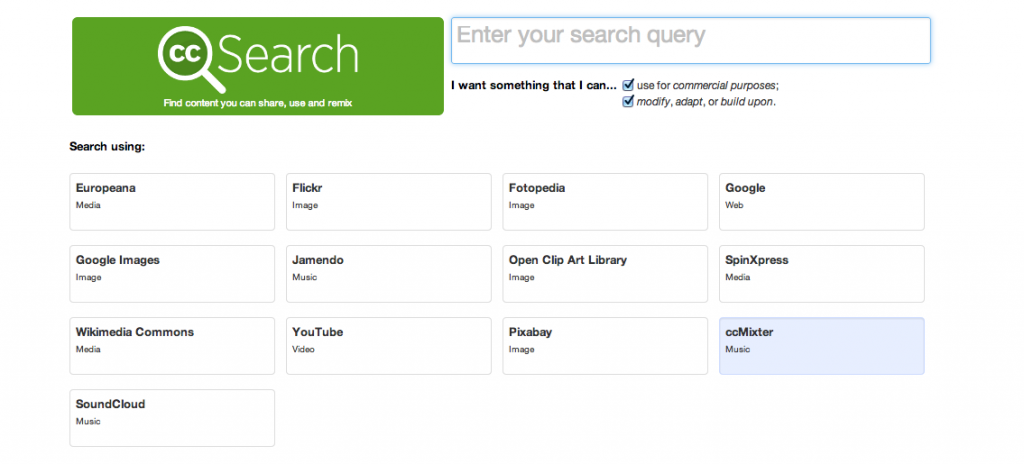
As promised, this post is about some considerations teachers and learners need to make when using content (their own media or the works of others) in their mobile compositions. Most of the following is included in my upcoming book on mobile learning field activities, but I wanted to post it beforehand in case any teachers are about to give any of these activities a try.
Content, Copyright, and Creative Commons
Ideally the content (media or data) being used to generate meaning would be created by the learners themselves. However, there is an often an attempt to assemble a composition using both learner-generated content, primary source content (census records, paintings, photographs, diaries, etchings on the sides of buildings), and secondary source content (reviewed articles, books, analysis). So the expectation is that for some of these mobile learning field activities, at least some of the content being used to generate meaning in the compositions will have been created by others. As such, it is important whenever possible to pull content from sources without onerous legal restrictions (public domain material, particular Creative Commons licenses) or content that is available for reuse and derivative works. I cannot stress how important it is to consider whether the content you are using is licensed for derivative works. Without that reuse clause, essentially you are limited to presenting the original work with the proper citation. However, presentation in and of itself isn’t the type of learning that these mobile learning field activities stress. We are all about remixing and reusing, generating a new take on a particular context with both borrowed and created content. So look for content that is open for derivative works whenever possible.
Excellent materials for teaching your learners about copyright are available from the Electronic Frontier Foundation (EFF), called, convincingly enough, Teaching Copyright. I highly recommend them.
To begin, it would be a good idea to become familiar with Creative Commons and their licenses for content found online. For our purposes in terms of remixing this content into our mobile compositions, learners should consider those Creative Commons licenses that allow for reuse and remixing, namely:
- Attribution CC BY
- Attribution-ShareAlike CC BY-SA
- Attribution-NonCommercial CC BY-NC
- Attribution-NonCommercial-ShareAlike CC BY-NC-SA
If the license states that no derivatives are allowed, then your learners should avoid using the content in their compositions. More than likely they would be protected under some fair use/fair dealings as it is for educational use, but I am not sure I would be willing to take that chance. These field activities push the boundaries a bit in terms of formal education so you may or may not be exposing yourself to possible unpleasantness later on.
Once the compositions are complete, an excellent learning activity would be to consider what Creative Commons license they wish to apply to their own work, based on their audience and their comfort with derivatives or commercial reuses. This is an excellent opportunity for teachers to engage their learners in copyright questions like this as they are both content users (curators) and content creators and are thus looking at the question of data ownership from both sides of the fence. So have them discuss which they would apply to their own work and their reasons for doing so. All of this should be driven by their sense of what they hope to achieve with their media and their compositions; how others are allowed to use their work will go a long way in making that purpose visible to them.
That being said, below are some resources that provide content under Creative Commons licenses that can be remixed (look carefully at the license). The first is by far the easiest as it is the search function from Creative Commons which searches across a wide variety of social and media platforms, including YouTube, Flickr, Vimeo, Soundcloud, Google Images, and more. Bear in mind that the materials produced in this search are not guaranteed to be
- open for reuse and derivative works (look carefully at the license)
- authored by the person who is hosting them (ie, that user might have not any permissions to even give you)
- not orphan works (many users are happy to load these works to their sites and ask for forgiveness later, rather than permission now. You decide how comfortable you are with that proposition with your learners)
Content
So here are some possible choices for finding content that allows for derivative works. Be sure to search carefully as each institution or individual will have different licenses applied according to their ideas about what acceptable use entails. Ultimately, it is best to have a pool of your own content to use along with a clear idea of where to find additional content that is available for derivative works. This ability to navigate this complicated legal environment is an excellent skill for your learners to have (however frustrating it is that they have to have it at all).
- Creative Commons Search.
- The Commons on Flickr.
- Creative Commons licenses on Vimeo.
- Creative Commons content on Soundcloud


[…] blog using your own photos not only adds an element of personal style, but also avoids issues with licensing the content of others. The images above are screenshots that I’ve taken myself, of my own online spaces. The […]